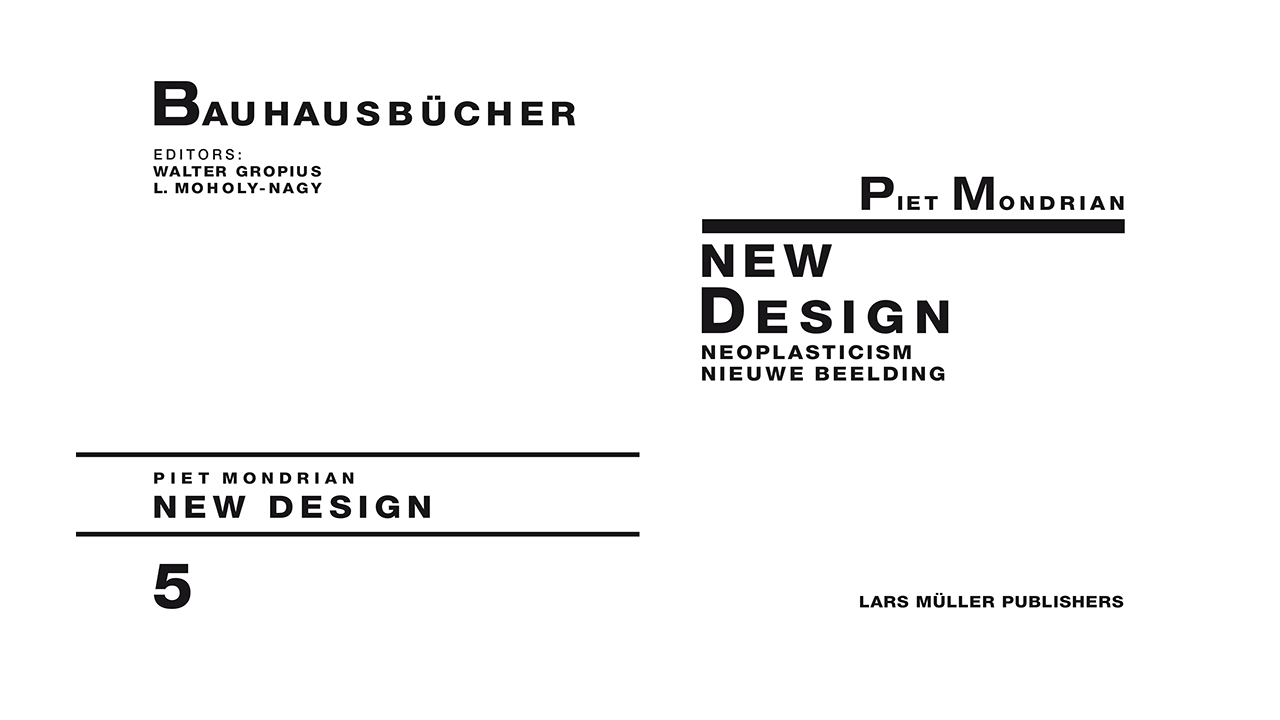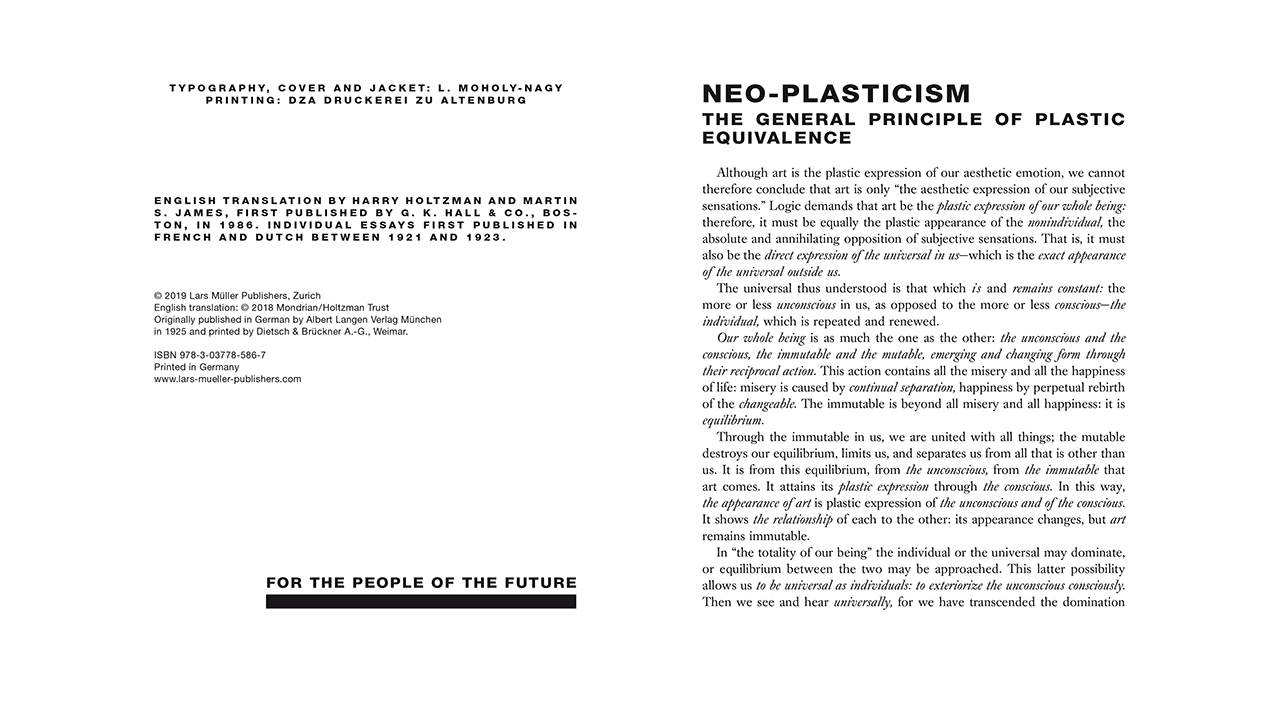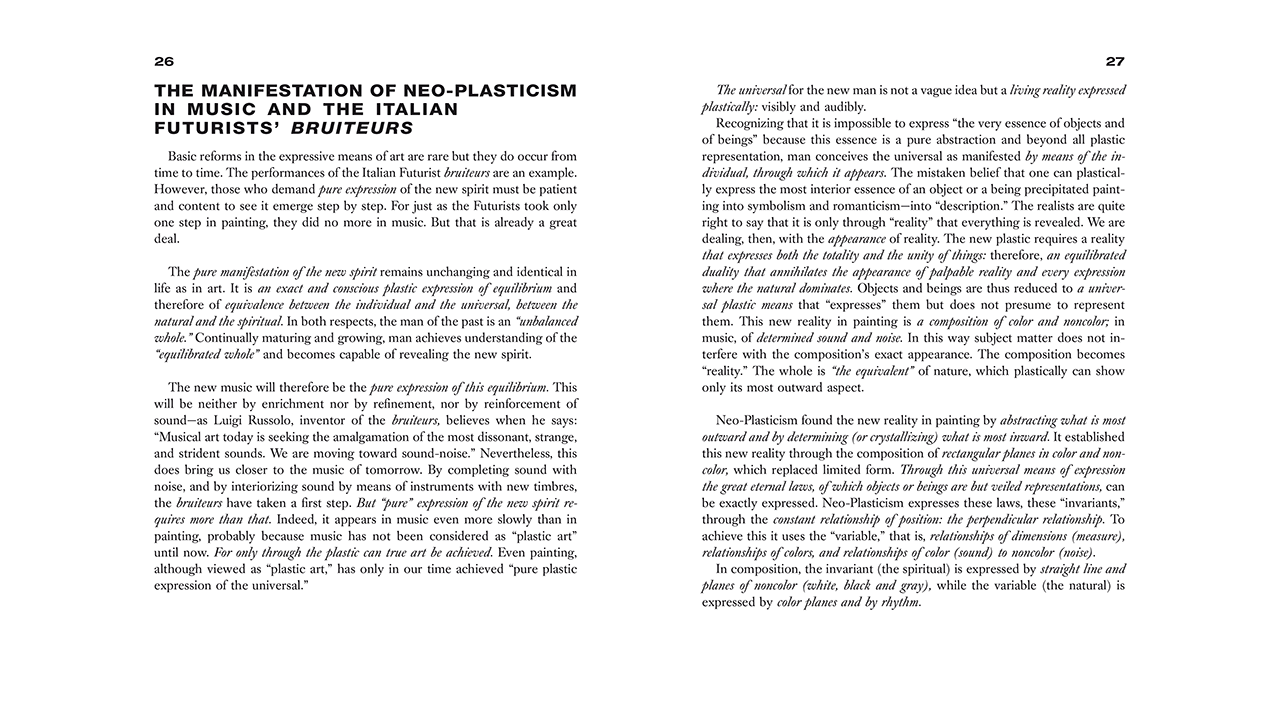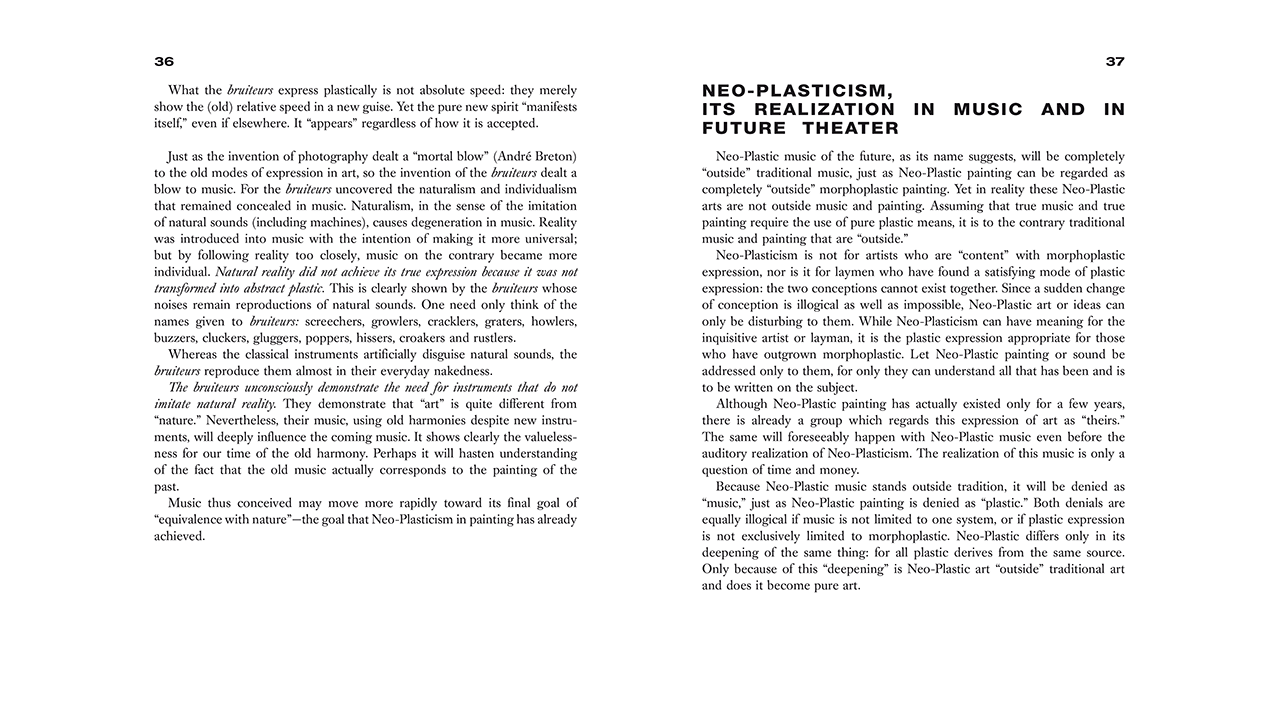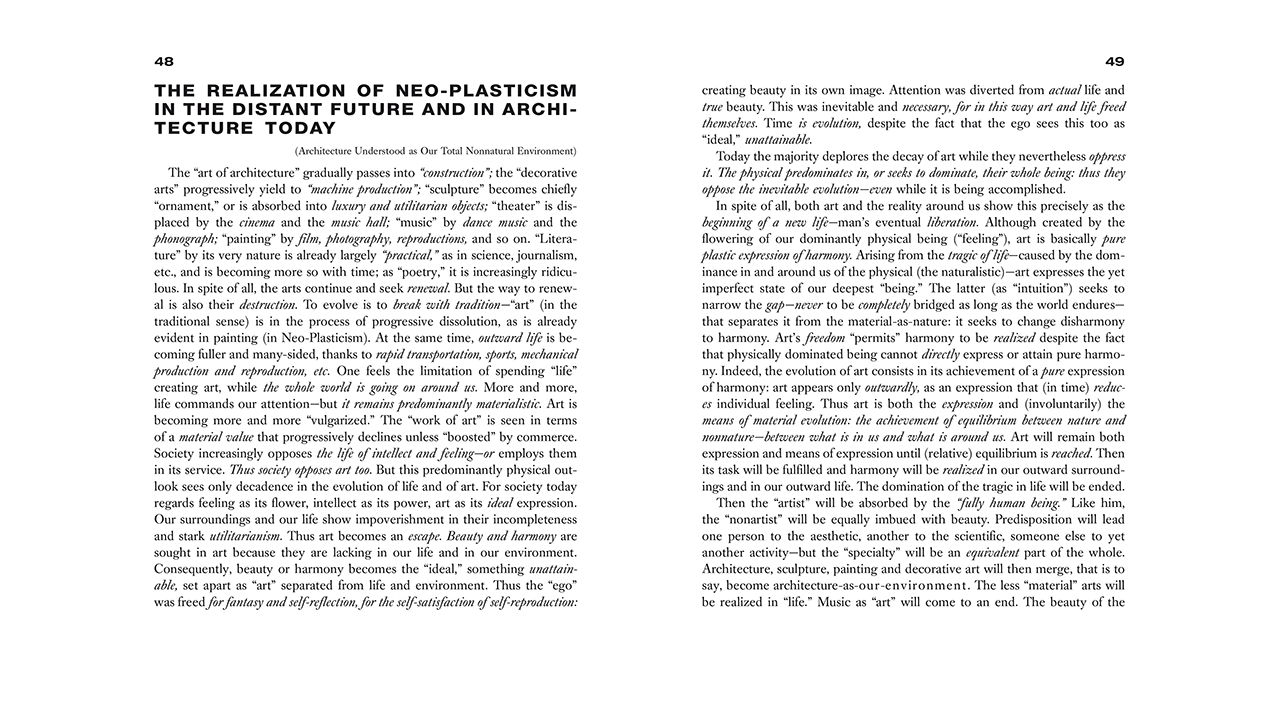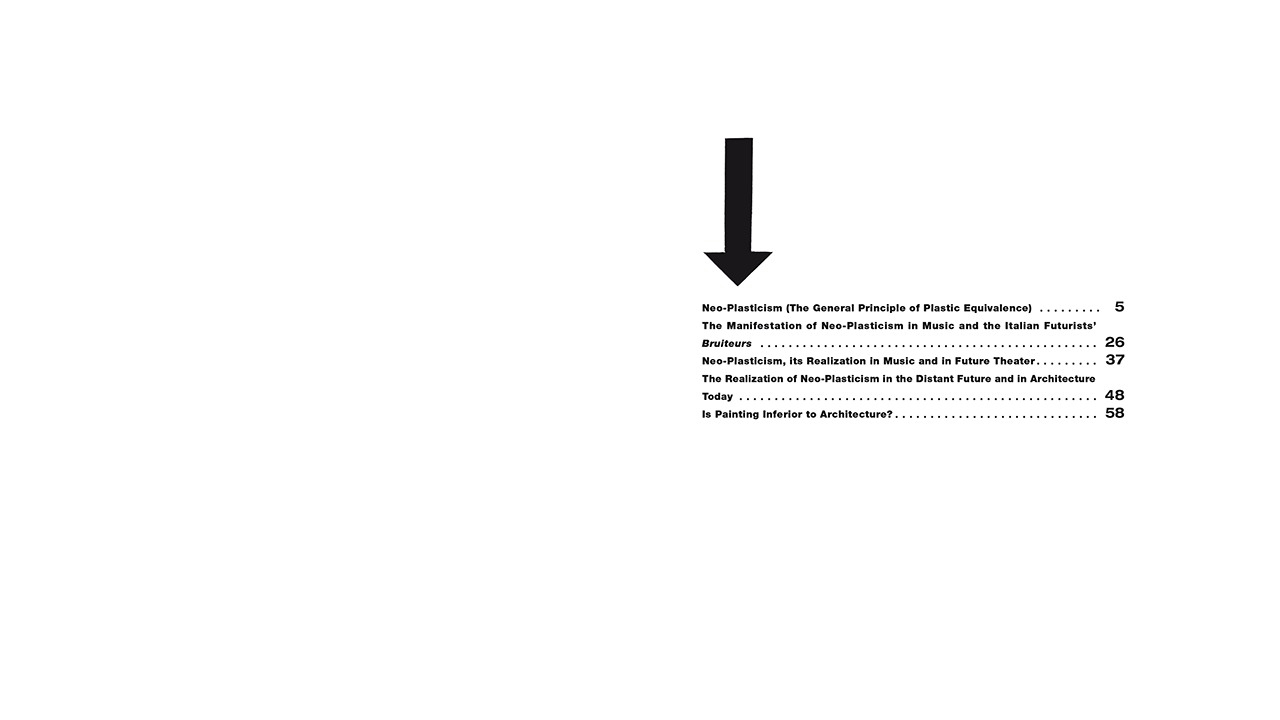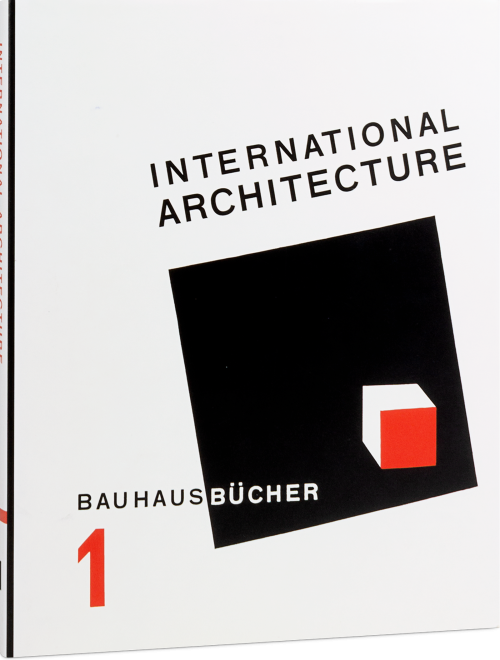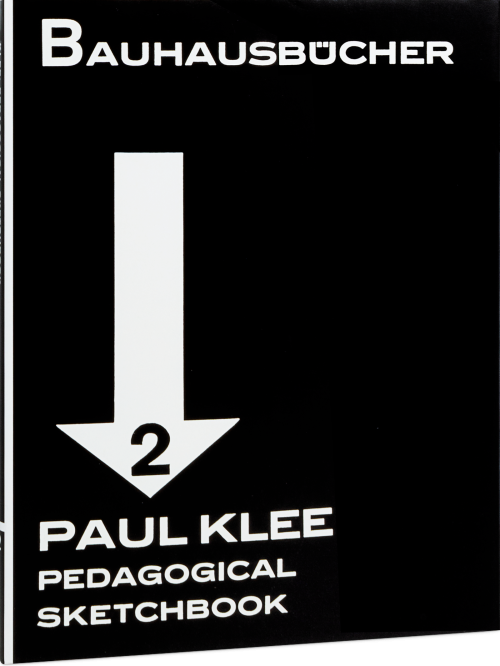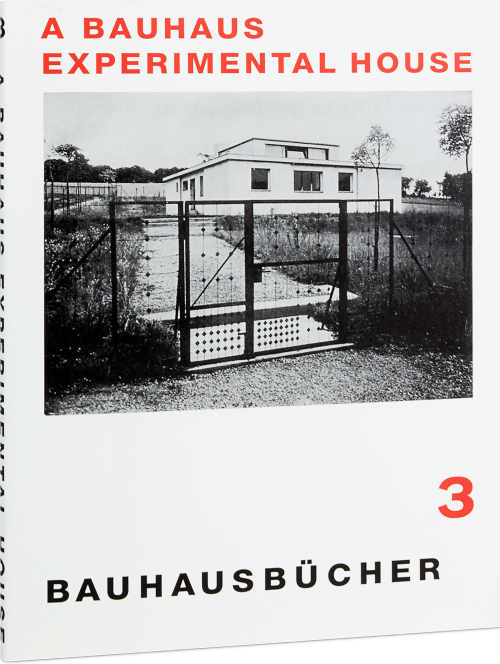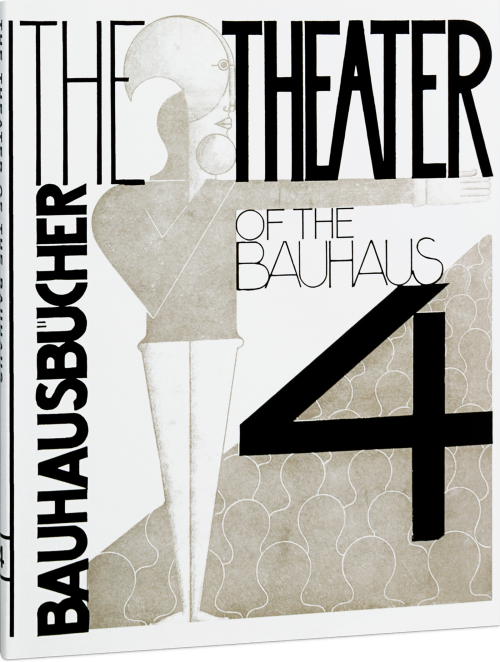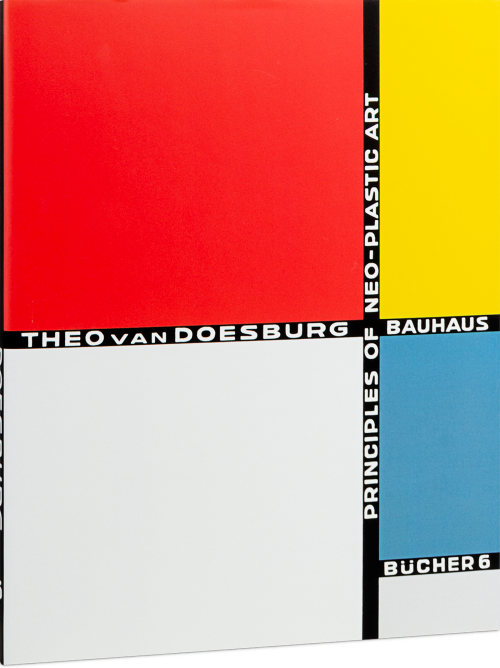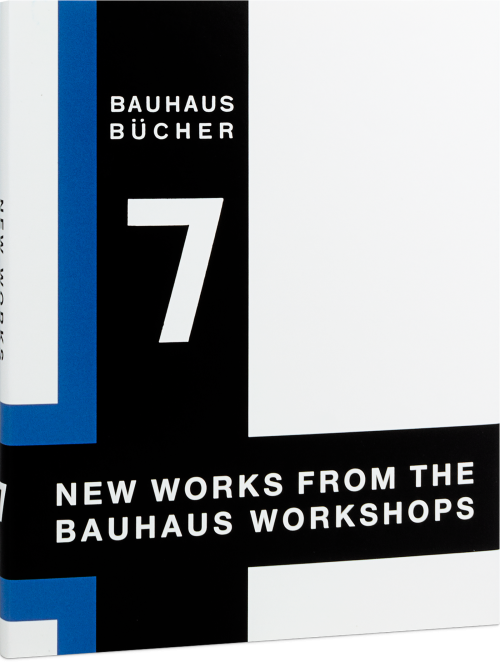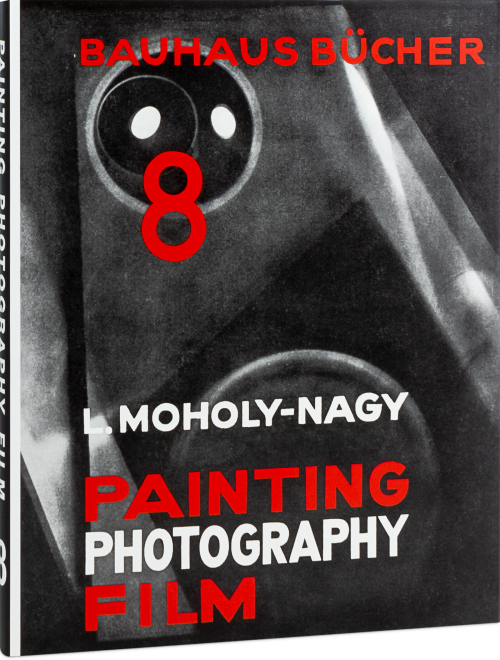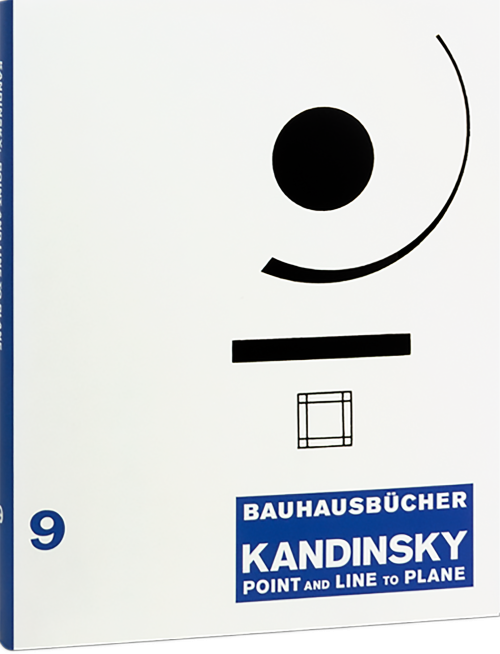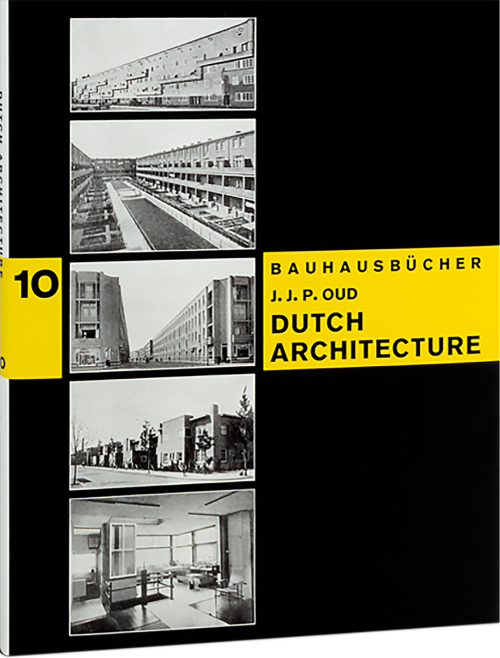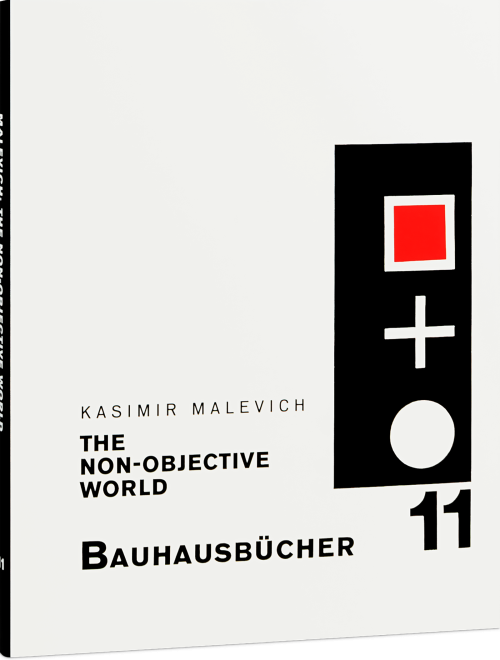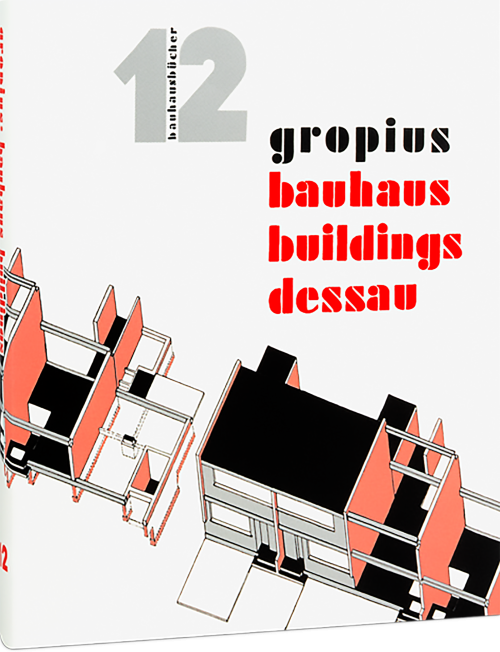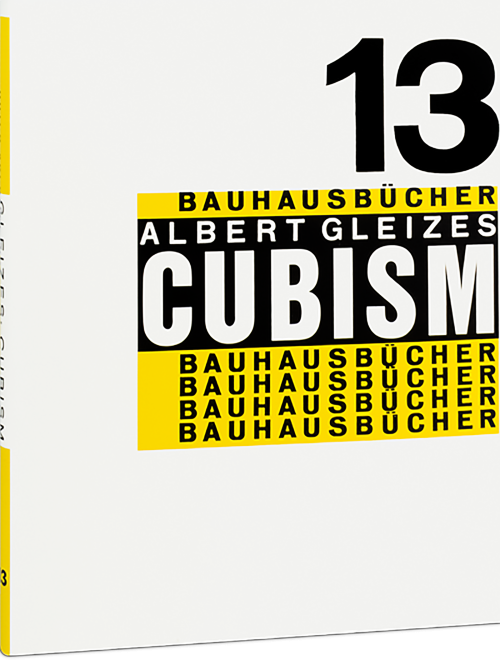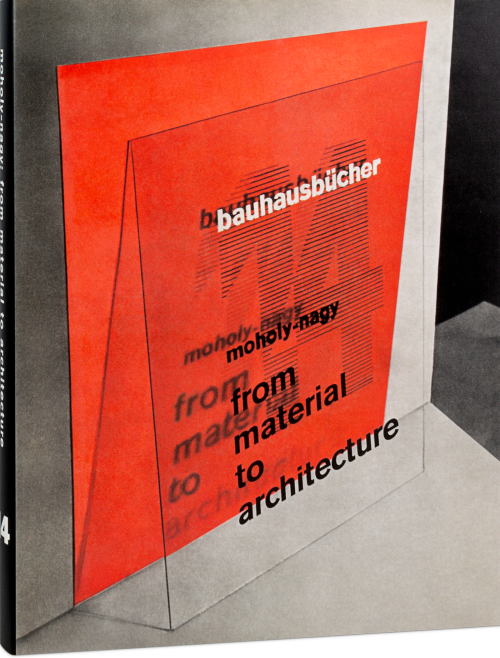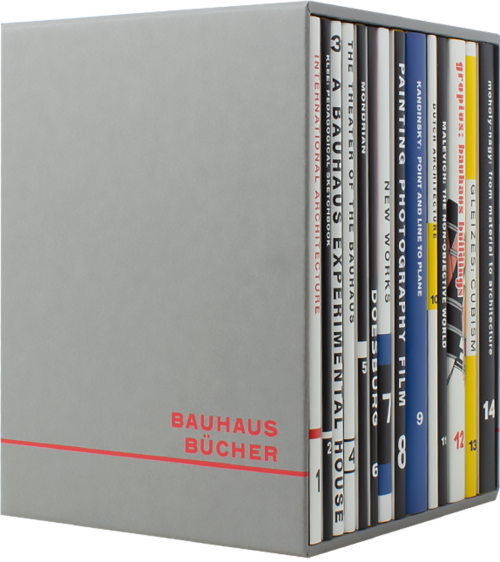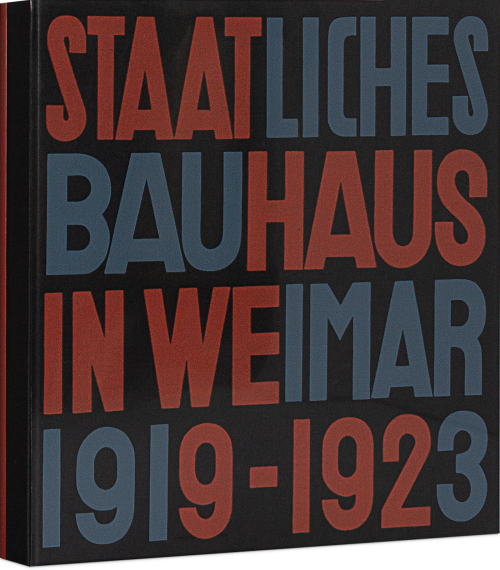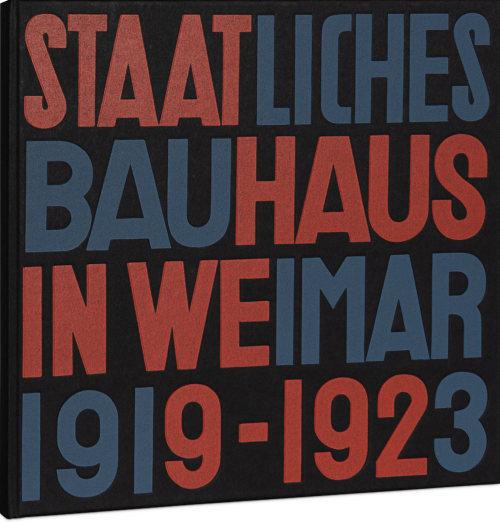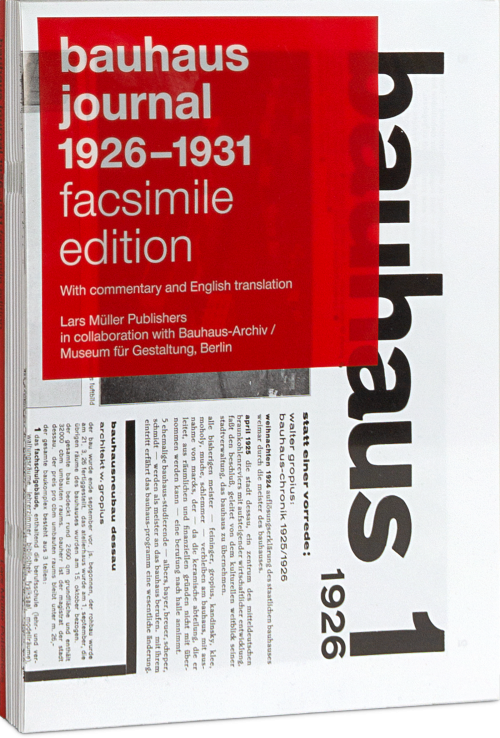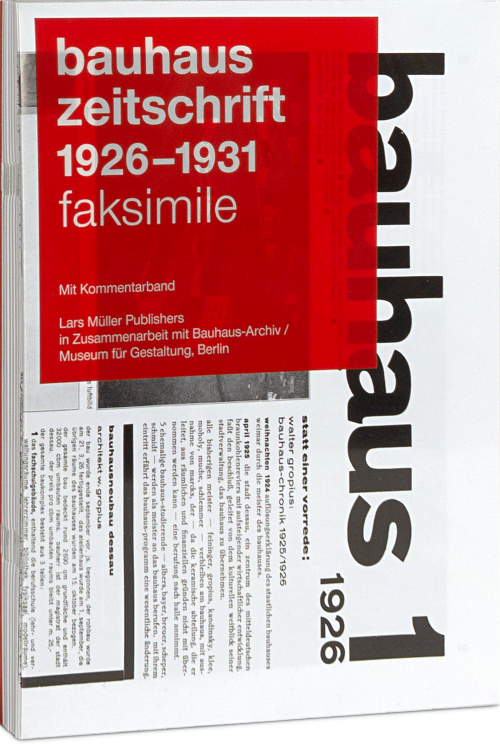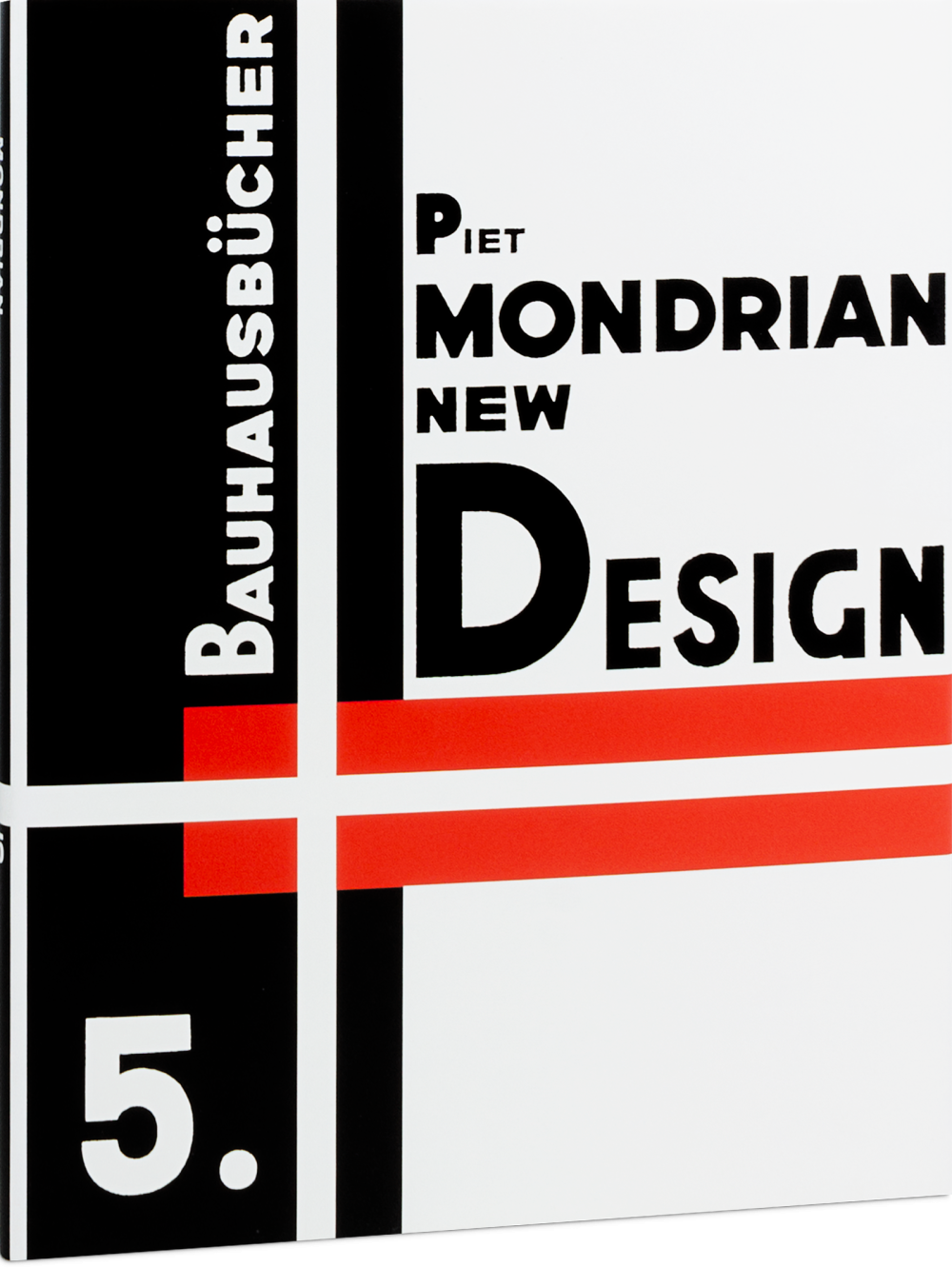
New Design – Neoplasticism, Nieuwe Beelding
Although Piet Mondrian (1872–1944) was not an active member of the Bauhaus, his name is often mentioned in connection with the art school. Mondrian, co-founder of the De Stijl movement in the Netherlands, called for a strict reduction of visual language to orthogonal composition and primary colors, which met with great approval in Bauhaus circles. His rigorous geometric compositions of verticals and horizontals and strident palette of essential colors were important to numerous Bauhaus masters. Mondrian’s influence appeared in Bauhaus architecture, product design, typography, graphic design, painting and beyond. It is therefore not surprising that Mondrian’s essays on art theory, most of them written for the De Stijl journal, were translated into German and published as fifth volume of the Bauhausbücher series.
Harry Holtzman’s renowned translations of Mondrian’s selected essays appear in New Design as a complete compilation for the first time. The publication is true to the content and design of the German first edition of 1925 and includes a brief scholarly commentary.
The series is published with the generous support of the Rudolf-August Oetker-Stiftung.
Although Piet Mondrian (1872–1944) was not an active member of the Bauhaus, his name is often mentioned in connection with the art school. Mondrian, co-founder of the De Stijl movement in the Netherlands, called for a strict reduction of visual language to orthogonal composition and primary colors, which met with great approval in Bauhaus circles. His rigorous geometric compositions of verticals and horizontals and strident palette of essential colors were important to numerous Bauhaus masters. Mondrian’s influence appeared in Bauhaus architecture, product design, typography, graphic design, painting and beyond. It is therefore not surprising that Mondrian’s essays on art theory, most of them written for the De Stijl journal, were translated into German and published as fifth volume of the Bauhausbücher series.
Harry Holtzman’s renowned translations of Mondrian’s selected essays appear in New Design as a complete compilation for the first time. The publication is true to the content and design of the German first edition of 1925 and includes a brief scholarly commentary.
The series is published with the generous support of the Rudolf-August Oetker-Stiftung.
«Als wahres publizistisches Highlight im Bauhaus-Jubiläumsjahr macht Lars Müller Publishers [...] einer internationalen Leserschaft vier Bände der von Walter Gropius und László Moholy-Nagy herausgegebenen Bauhausbücher neu zugänglich.»
– Cold Perfection
“It is these authentic writings, the Bauhaus' original publications, that illuminate its legacy in the most accurate way.”
– Daniella Ohad
